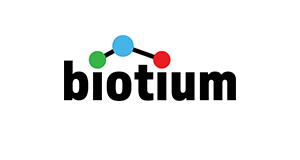Ferritin, Light Chain (FTL) (Microglia Marker) (FTL/1386), CF740 conjugate, 0.1mg/mL
Ferritin, Light Chain (FTL) (Microglia Marker) (FTL/1386), CF740 conjugate, 0.1mg/mL
SKU
BTMBNC741386-100
Packaging Unit
100 uL
Manufacturer
Biotium
Availability:
loading...
Price is loading...
Description: Mammalian ferritins consist of 24 subunits made up of 2 types of polypeptide chains, ferritin heavy chain and ferritin light chain. Ferritin heavy chains catalyze the first step in iron storage, the oxidation of Fe (II), whereas ferritin light chains promote the nucleation of ferrihydrite, enabling storage of Fe (III). Light chain ferritin is involved in cataracts by at least two mechanisms, hereditary hyperferritinemia cataract syndrome, in which light chain ferritin is overexpressed, and oxidative stress, an important factor in the development of ageing-related cataracts.Primary antibodies are available purified, or with a selection of fluorescent CF® Dyes and other labels. CF® Dyes offer exceptional brightness and photostability. Note: Conjugates of blue fluorescent dyes like CF®405S and CF®405M are not recommended for detecting low abundance targets, because blue dyes have lower fluorescence and can give higher non-specific background than other dye colors.
Product Origin: Animal - Mus musculus (mouse), Bos taurus (bovine)
Conjugate: CF740
Concentration: 0.1 mg/mL
Storage buffer: PBS, 0.1% rBSA, 0.05% azide
Clone: FTL/1386
Immunogen: Recombinant human FTL protein fragment (aa 38-165) (exact sequence is proprietary)
Antibody Reactivity: Ferritin, Light Chain
Entrez Gene ID: 2512
Z-Antibody Applications: IHC, FFPE (verified)/WB (verified)
Verified AB Applications: IHC (FFPE) (verified)/WB (verified)
Antibody Application Notes: Higher concentration may be required for direct detection using primary antibody conjugates than for indirect detection with secondary antibody/Immunohistology (formalin) 0.1-0.2 ug/mL/Flow cytometry 0.1-0.2ug/million cells Immunofluorescence 0.1-0.2ug/ml/Western blotting 0.1-0.2ug/ml/Staining of formalin-fixed tissues requires boiling tissue sections in 10 mM citrate buffer, pH 6.0, for 10-20 min followed by cooling at RT for 20 min/Optimal dilution for a specific application should be determined by user
Product Origin: Animal - Mus musculus (mouse), Bos taurus (bovine)
Conjugate: CF740
Concentration: 0.1 mg/mL
Storage buffer: PBS, 0.1% rBSA, 0.05% azide
Clone: FTL/1386
Immunogen: Recombinant human FTL protein fragment (aa 38-165) (exact sequence is proprietary)
Antibody Reactivity: Ferritin, Light Chain
Entrez Gene ID: 2512
Z-Antibody Applications: IHC, FFPE (verified)/WB (verified)
Verified AB Applications: IHC (FFPE) (verified)/WB (verified)
Antibody Application Notes: Higher concentration may be required for direct detection using primary antibody conjugates than for indirect detection with secondary antibody/Immunohistology (formalin) 0.1-0.2 ug/mL/Flow cytometry 0.1-0.2ug/million cells Immunofluorescence 0.1-0.2ug/ml/Western blotting 0.1-0.2ug/ml/Staining of formalin-fixed tissues requires boiling tissue sections in 10 mM citrate buffer, pH 6.0, for 10-20 min followed by cooling at RT for 20 min/Optimal dilution for a specific application should be determined by user
| SKU | BTMBNC741386-100 |
|---|---|
| Manufacturer | Biotium |
| Manufacturer SKU | BNC741386-100 |
| Package Unit | 100 uL |
| Quantity Unit | STK |
| Reactivity | Human |
| Clonality | Monoclonal |
| Application | Western Blotting, Immunohistochemistry |
| Isotype | IgG2b |
| Host | Mouse |
| Conjugate | Conjugated, CF740 |
| Product information (PDF) | Download |
| MSDS (PDF) | Download |

 Deutsch
Deutsch







